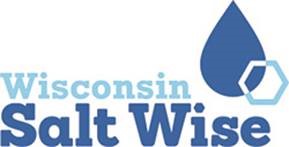Saltless Water Softeners Analysis

Wisconsin Salt Wise is a coalition of organizations from across Wisconsin working together to reduce salt pollution in our lakes, streams and drinking water. Our primary goals are to: educate residents, leaders and winter maintenance professionals on salt pollution and solutions, provide training and promote best practices to reduce salt pollution and recognize contractors committed to using the right amount of salt for conditions.
The groundwater aquifers in southern and eastern Wisconsin are limestone (CaCO3) and dolomitic limestone (CaMg(CO3)2). The water that is drawn out of those aquifers is designated as “hard water” because the calcium and magnesium dissolve into the water. The calcium and magnesium ions can form scale in pipes and appliance as well as on fixtures. The most common home solution to this problem is to remove the calcium and magnesium ions with an ion-exchange water softener that removes the Ca+2 and Mg+2 ions and replaces them with Na+ ion (salt).
The problem with these systems is that all the salt that they discharge ends up in the fresh water because wastewater treatment plants cannot remove water softener salt from wastewater. Currently, forty-five wastewater treatment plants in hardwater regions across Wisconsin have variances to discharge chloride above the threshold that is toxic to aquatic organisms. Because removing salt from wastewater is extremely costly both financially and energetically, wastewater treatment plants are trying to reduce the amount of salt entering the waste stream by encouraging residents in their service area to upgrade or optimize their water softeners. Students will be analyzing and testing salt-free water softeners to determine their viability.
